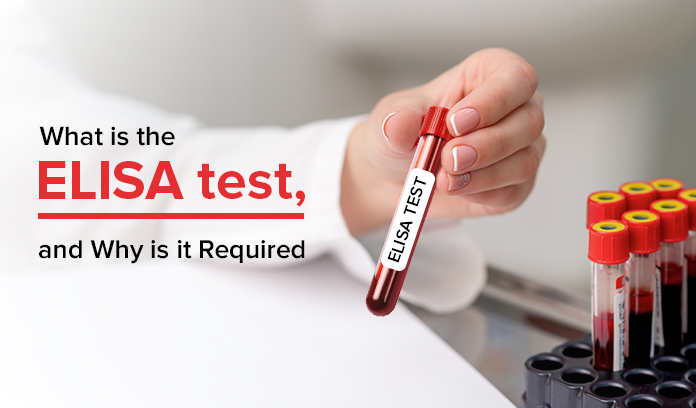Wouldn’t you prefer if you detected HIV earlier rather than later?
And wouldn’t you want to know if you had a food allergy, in order to improve fitness?
You can do all that with the ELISA test.
The Enzyme-Linked Immunosorbent Assay, or ELISA test, is a widely used laboratory technique for detecting and quantifying specific proteins, antibodies, hormones, antigens, and other molecules in biological samples.
ELISA tests are commonly employed in medical diagnostics, research, and various fields of science.
Here’s a brief overview of what the ELISA test is and what it requires:
What do We use the ELISA Test for?
The ELISA test is primarily used for:
- Disease Diagnosis: ELISA can detect the presence of antibodies or antigens associated with various diseases, including HIV, hepatitis, and autoimmune disorders.
- Medical Research: Researchers use ELISA to study and quantify specific proteins or molecules in biological samples, aiding in the development of new drugs and therapies.
- Food and Environmental Testing: ELISA is utilized to detect allergens, toxins, and contaminants in food products and environmental samples.
Are there Several Types of ELISA Tests?
There are several variations of the ELISA test, including:
- Direct ELISA: This test directly detects the presence of an antigen or antibody in a sample.
- Indirect ELISA: In this test, an antibody specific to the target molecule is used to detect the antigen-antibody complex formed in the sample.
- Sandwich ELISA: It involves using two antibodies to sandwich the target antigen, allowing for high specificity and sensitivity.
- Competitive ELISA: This type of ELISA is used when you want to measure the concentration of a target molecule by competition with a labeled molecule.
What are the Required Conditions for an ELISA Test?
To perform an ELISA test, several essential components and materials are required:
- Microplate: A 96-well microplate is commonly used, with each well serving as an individual testing site.
- Antibodies or Antigens: Specific antibodies or antigens that bind to the target molecule.
- Enzyme Conjugate: An enzyme molecule (e.g., horseradish peroxidase or alkaline phosphatase) is attached to a secondary antibody, which will bind to the target molecule if present.
- Substrate: A colorless substrate that, when acted upon by the enzyme, produces a visible color change. Common substrates include TMB (3,3′,5,5′-tetramethylbenzidine) or ABTS (2,2′-azino-bis(3-ethylbenzothiazoline-6-sulfonic acid)).
- Stop Solution: This solution is added to halt the enzyme-substrate reaction and prevent further color development.
- Washing Buffer: A buffer solution is used to wash away unbound substances and reduce background noise.
- Calibration Standards: Known concentrations of the target molecule to create a standard curve for quantification.
- Microplate Reader: A specialized instrument that measures the absorbance or fluorescence of each well, allowing for the quantification of the target molecule.
- Quality Control Samples: Positive and negative control samples for validation and quality assurance.
How exactly does the ELISA Test Work?
In an ELISA test, a biological sample (e.g., blood, serum, urine) is added to the microplate wells coated with antibodies or antigens specific to the target molecule. If the target molecule is present in the sample, it binds to the immobilized antibodies or antigens.
After a series of washing steps to remove unbound substances, an enzyme-conjugated secondary antibody is added. If the target molecule is present, it binds to the enzyme-conjugated antibody. After another round of washing, the substrate is added, and the enzyme catalyzes a reaction that produces a color change.
The intensity of the color is directly proportional to the amount of the target molecule in the sample and is measured using a microplate reader.
The ELISA test is a versatile and highly sensitive technique used in various fields, including clinical diagnostics, research, and quality control processes in industries such as food safety and environmental monitoring.
Its reliability, precision, and ability to detect specific molecules make it an indispensable tool in the scientific community. From Novak Djokovic learning of his gluten allergy to modern patients learning of HIV/AIDs conditions early, the ELISA test is a versatile diagnostic tool!

